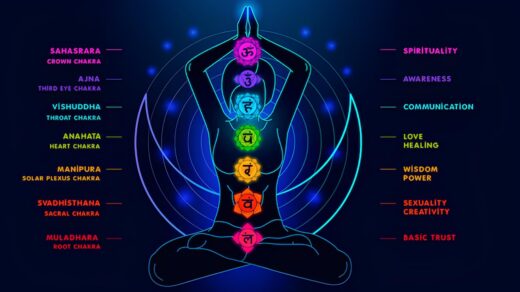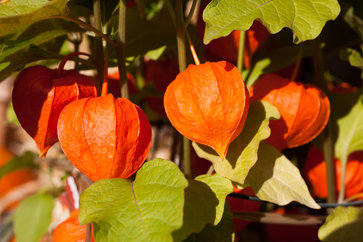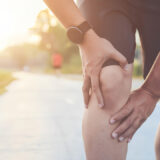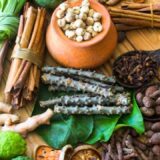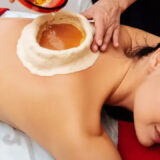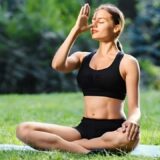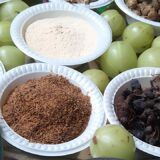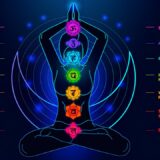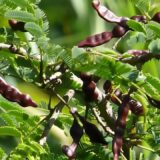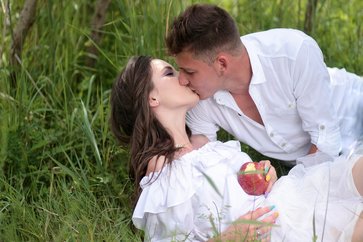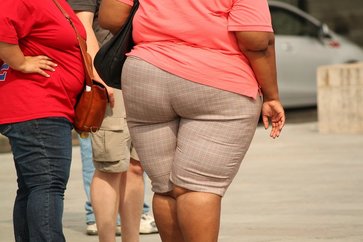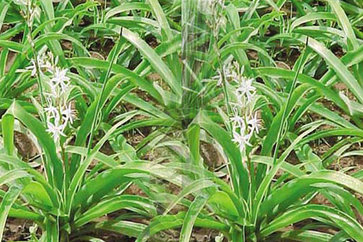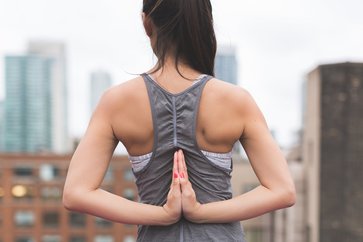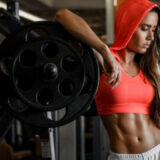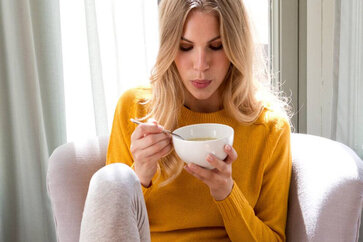Udvartana: Ayurvedic Powder Massage & Its Benefits
Massage therapy is a widely practiced therapeutic procedure known for its various health benefits. Its popularity stems from being largely risk-free and rooted in centuries of traditional medicine, where it has been used to treat and prevent a range of illnesses. Massage also plays a preventive role in maintaining overall health and well-being. Today, massage holds a significant place in Naturopathy. In this article, we will explore the different types of Udvartana massage and their benefits. Udvartana is a well-known Ayurvedic massage, particularly practiced in Kerala, and is one of many forms of Ayurvedic treatments.
Today, massage holds a significant place in Naturopathy. In this article, we will explore the different types of Udvartana massage and their benefits. Udvartana is a well-known Ayurvedic massage, particularly practiced in Kerala, and is one of many forms of Ayurvedic treatments.
This massage technique involves body scrubbing using ubtan—a traditional Indian herbal paste made from natural herbs and grains. Unlike many other massages, Udvartana does not use oil or other liquids. Instead, a dry or slightly moist paste is applied to the body using upward strokes. This paste is typically made from ground grains, flours, herbal powders, and sometimes natural oils, depending on the specific need.
The primary aim of Udvartana is detoxification, improving circulation, and enhancing skin tone. It is especially recommended for individuals with a dominant Kapha dosha, as it helps to reduce excess fat and improve metabolism.
What is Udwartanam?
The word Udwartanam is derived from two Sanskrit terms: Urdhwa meaning “upward” and Varthanam meaning “to move.” Thus, Udwartanam refers to an upward movement, which describes the technique used in this unique Ayurvedic massage.
Udwartanam is a specialized form of Abhyanga (Ayurvedic massage) in which dry herbal powders—sometimes combined with minimal oil—are used for massaging the body. What sets it apart is the direction of the massage strokes: they are performed in an upward motion, from the feet toward the head. This is the opposite of traditional Abhyanga, where strokes typically follow a downward direction.
The upward strokes in Udwartanam are also performed against the direction of body hair growth, a technique known in Sanskrit as Pratiloma Gati. This approach is believed to stimulate circulation, exfoliate the skin, and help break down excess fat, making Udwartanam particularly effective for those with a dominant Kapha dosha.
Who Should Consider Udvartana Massage?
Udvartana is particularly beneficial for individuals dealing with the following conditions:
Metabolic and Weight-Related Issues
- Abdominal obesity
- General overweight or obesity (highly effective for fat reduction)
- Cellulite accumulation
- Postpartum weight gain
- Prevention of skin loosening during weight-loss programs
Neuromuscular and Mobility Conditions
- Muscular weakness
- Paralysis
- Hemiplegia
- Cerebral palsy
- Parkinson’s disease
- Motor neuron disorders
Reduced joint mobility caused by:
- Excess Kapha dosha
- Ama (toxic accumulation)
- Rheumatoid arthritis
Nerve and Circulatory Disorders
- Diabetic neuropathy
- Sciatica of Kapha origin
- Sclerosis (hardening) of blood vessels
Skin and Aesthetic Benefits
- Removal of dead skin cells
- Improvement of skin texture and glow
How is Udvartana Massage Performed?
Udvartana is a specialized Ayurvedic massage therapy designed to detoxify the body by eliminating toxins through the skin and lymphatic system. It is particularly beneficial for managing skeletal disorders, muscular imbalances, and metabolic issues.
The process involves the following steps:
- Application of Herbal Paste: A special herbal paste—made from natural powders, grains, and sometimes oils—is prepared and applied uniformly over the entire body of the recipient. The paste is often warm and slightly moist.
- Massage Technique: Once the paste is applied, the massage therapist begins rubbing it gently but firmly into the skin using upward strokes. These strokes are directed toward the heart, which is believed to aid in lymphatic drainage and the removal of toxins.
- Penetration Time: The paste is left on the body for a short duration to allow the active herbal ingredients to penetrate deeply into the skin and tissues, enhancing its therapeutic effect.
- Oil Application (Optional): After the paste massage, the entire body is often coated with warm herbal oil. This step helps to nourish the skin, soothe the tissues, and balance the effects of the dry massage.
- Duration and Frequency: A typical Udvartana session lasts around 60 minutes. For best results, the therapy is usually recommended daily over a course of 7 days or more, depending on the individual’s condition and the Ayurvedic practitioner’s recommendation.
Different Types of Udvartana Massage
In Ayurveda, Udvartana is broadly categorized based on the materials used and the desired therapeutic effect. The two main types are:
1. Ruksha Udvartana (Dry Udvartana)
Ruksha means “dry” in Sanskrit.
Materials Used: Only dry herbal powders—no oil is used.
Purpose: Helps reduce excess Kapha dosha, breaks down fat, and removes Ama (toxins).
Best For:
- Obesity and cellulite
- Detoxification
- Improving lymphatic flow
- Exfoliating dead skin cells
- Reducing sluggishness and heaviness in the body
Effect: Creates a lightness in the body (laghuta) and stimulates circulation.
2. Snigdha Udvartana (Oil-Based Udvartana)
Snigdha means “unctuous” or “oily.”
Materials Used: Herbal powders mixed with medicated oils or ghee.
Purpose: Used when dryness, roughness, or muscular stiffness is present.
Best For:
- Individuals with Vata dosha imbalance
- Neuromuscular disorders
- Skin conditions with dryness
- Postpartum care
Effect: Nourishes and lubricates the tissues while still aiding in detoxification.
3. Additional Variations (Based on Ingredients or Goals)
Ubtan Udvartana:
- Uses traditional Indian ubtan (a mix of flour, turmeric, and other herbs) for beauty and skin care.
- Commonly used in bridal treatments or for improving the complexion.
Herbal Udvartana:
- Focuses on condition-specific herbs (e.g., triphala, chitraka, mustard).
- Tailored to treat conditions like rheumatoid arthritis, diabetes, or circulatory issues.
Each type of Udvartana is chosen based on a person’s body constitution (Prakriti), disease condition (Vikriti), and the desired therapeutic goal. An Ayurvedic practitioner can help decide which variation is most suitable for an individual.
Herbs Used In Udvartana
Triphala is the powder generally used in this therapy. It is a blend that has excellent nerve-stimulating agents such as.
1. Triphala
Triphala, the cornerstone of Udvartana, is a potent blend composed of three essential herbs – Amalaki (Gooseberry), Haritaki (Myrobalan), and Bibhitaki (Belerica). This combination yields excellent nerve-stimulating properties, making Triphala a fundamental element in the Udvartana herbal mix.
2. Deodar (Cedrus deodara)
Deodar, derived from the majestic Cedrus deodara tree, contributes its soothing and grounding properties to the Udvartana blend. Alongside Triphala, Deodar enhances the overall therapeutic effects of the massage.
3. Senna (Cassia angustifolia)
Senna, known for its laxative properties, complements the other herbs in the Udvartana mixture. Its presence aids in gentle detoxification, supporting the cleansing process initiated by the massage.
4. Horse Gram (Dolichos biflorus)
Horse Gram, a legume widely used in Ayurveda, adds its unique attributes to the Udvartana blend. It is particularly valued for its role in promoting healthy weight management and metabolism.
5. Phyllanthus (Phyllanthus niruri)
Phyllanthus, commonly known as ‘Bhumi Amla’ or ‘Stonebreaker,’ is highly regarded for its healing properties. In Udvartana, it contributes to the nourishment and rejuvenation of the skin.
6. Mustard (Brassica juncea)
Mustard, with its warming and stimulating properties, complements the overall therapeutic effects of Udvartana. Its inclusion enhances the massage’s invigorating nature, promoting a sense of vitality and energy.
The carefully crafted blend of herbs used in Udvartana, with Triphala at its core, exemplifies the wisdom of Ayurvedic healing. These powerful herbs, with their unique properties, work synergistically to create a truly transformative massage experience.
Procedure & Technique of Udvartana Therapy
Udvartana therapy involves massaging the body with warmed herbal powders in a specific manner. The massage is performed against the direction of hair growth—a technique known in Ayurveda as Pratiloma Gati. This method helps stimulate circulation and promotes the breakdown of subcutaneous fat and toxins.
Key Steps of the Procedure:
- Application in Seven Positions: The herbal powder—either dry or mixed with a small amount of oil (such as sesame or olive oil for sensitive skin)—is applied and massaged in seven different body postures to ensure full-body coverage.
- Massage Technique: The massage is performed using rhythmic, firm strokes with consistent pressure, focusing on rubbing the herbal mixture into the skin. This process helps in exfoliation, fat breakdown, and lymphatic drainage.
- Duration: The massage typically lasts between 15 to 45 minutes, depending on the individual’s body type and therapeutic goal.
- Rest Period: After the massage, the person is allowed to rest for about 15 to 20 minutes, which helps the herbal ingredients further absorb into the skin.
- Cleansing: A lukewarm bath is then given to remove the residue and refresh the body.
- Post-Massage Care: After bathing, a gentle moisturizer or medicated oil may be applied to keep the skin hydrated and smooth.
Note: This therapy is usually performed by a trained Ayurvedic practitioner or therapist, who tailors the technique based on the individual’s Prakriti (body constitution) and health condition.
Top 10 Powder Massage Benefits
1. Aids Weight Loss
Udvartana is particularly effective in breaking down subcutaneous fat and reducing body circumference. The vigorous upward strokes increase circulation, stimulate the lymphatic system, and help metabolize stored fat. When combined with a balanced diet and regular exercise, this therapy supports long-term weight management and helps reduce stubborn fat deposits and cellulite.
2. Improves Skin Texture & Glow
The dry herbal powders used in Udvartana gently exfoliate the skin, removing dead cells, dirt, and excess oil. This results in smoother, clearer, and more radiant skin. Over time, it can reduce pigmentation, roughness, and acne. The herbs used also nourish the skin, improving elasticity and promoting an even complexion.
3. Detoxifies the Body
Udvartana stimulates the lymphatic system, aiding in the removal of metabolic waste and toxins (Ama) from the body. This process purifies the blood and internal tissues, enhancing overall vitality. The cleansing action not only detoxifies the skin but also supports deeper tissue detoxification, improving energy levels and general well-being.
4. Enhances Circulation
The upward massage strokes promote blood flow and oxygenation of the skin and muscles. Improved circulation helps deliver nutrients to tissues more efficiently and removes cellular waste. This rejuvenates the body, supports healing processes, and can help regulate blood pressure when used consistently as part of an integrative wellness routine.
5. Balances Kapha Dosha
Udvartana is especially recommended for those with Kapha dominance, which is associated with heaviness, sluggish metabolism, and fluid retention. The dry, heating nature of the powders pacifies excess Kapha, restoring balance and lightness to the body. It helps combat lethargy, emotional dullness, and weight gain tied to Kapha imbalance.
6. Tones Muscles
The firm massage strokes in Udvartana strengthen and tone the underlying musculature. By stimulating tissues, this therapy promotes firmness, enhances definition, and improves posture. It’s particularly beneficial for individuals experiencing muscle flaccidity after weight loss or childbirth, or for athletes looking to maintain muscular health without intense physical strain.
7. Reduces Water Retention
By enhancing lymphatic flow and circulation, Udvartana helps the body eliminate excess fluid trapped in tissues. This is particularly useful in cases of bloating, puffiness, or swelling due to fluid imbalance. Over time, this reduction in water retention contributes to a leaner body profile and improved physical comfort.
8. Improves Joint Mobility
Udvartana therapy relieves joint stiffness and supports flexibility by increasing circulation and reducing inflammation. The technique is often used in managing conditions like arthritis, especially when caused by excess Kapha or Ama. Regular sessions may improve ease of movement and reduce pain, contributing to better functional mobility.
9. Supports Nervous System Disorders
Used alongside other Ayurvedic treatments, Udvartana can be beneficial for neurological conditions such as paralysis, Parkinson’s disease, and motor neuron disorders. The massage enhances circulation to nerve endings, stimulates muscle tone, and may aid in improving sensory and motor functions. It also offers emotional support through its grounding effects.
10. Boosts Mental Alertness
The stimulating nature of Udvartana refreshes both the body and mind. By enhancing circulation and detoxification, it helps reduce fatigue, mental fog, and lethargy, common in people with high Kapha or toxin buildup. Recipients often report increased clarity, focus, and vitality after therapy, making it ideal for overall rejuvenation.
Frequently Asked Questions (FAQs) about Udvartana
1. What is Udvartana?
Udvartana is an ancient Ayurvedic massage therapy that involves using herbal powder or paste in a rhythmic motion to invigorate the body. It is recommended for various health conditions, including weight loss, skin care, and muscle toning.
2. How does Udvartana aid in weight loss?
Udvartana stimulates fat metabolism by using hot and dry herbal powders and oils. The massage’s specific rubbing action opens pores, clears blockages, and increases heat in the tissues, which aids in liquefying fat and promoting weight loss.
3. What are the benefits of Udvartana for the skin?
Udvartana improves skin complexion by cleansing and nourishing the skin. The exfoliating action of the herbal powder removes impurities, leaving the skin with a radiant and glowing appearance.
4. Is Udvartana suitable for everyone?
Udvartana is generally safe and suitable for most individuals. However, it is recommended to consult a Panchakarma expert before undergoing the therapy, especially for those with high blood pressure or skin infections.
5. What are the different types of Udvartana?
Udvartana is categorized into two types: Snigadh or Sneha (unctuous or oily), which involves the use of herbal paste, and Ruksha (dry), which uses dry herbal powders for a more stimulating experience.
6. Can Udvartana help with diabetes?
While Udvartana can be beneficial for individuals with diabetes due to its effects on fat metabolism, it is essential to remember that it is not a standalone long-term solution. For diabetes treatment, consult qualified Ayurvedic doctors for personalized care.
7. How long does a typical Udvartana session last?
A Udvartana massage session usually lasts between 30 to 45 minutes, where the herbal powder or paste is briskly rubbed into the entire body to promote its therapeutic effects.
8. Is Udvartana relaxing?
Yes, Udvartana induces relaxation and stress relief through its rhythmic massage technique. The therapy helps soothe the mind and body, promoting a sense of calmness and well-being.
9. What makes Triphala an essential part of Udvartana?
Triphala, a blend of three herbs (Amalaki, Haritaki, and Bibhitaki), is a crucial component of Udvartana. It possesses excellent nerve-stimulating properties and aids in detoxification, making it fundamental to the massage’s therapeutic effects.
10. Can Udvartana be done at home?
While Udvartana can be done at home, it is recommended to seek guidance from a qualified Ayurvedic practitioner for proper technique and personalized recommendations for the herbal blend used in the massage.
Apart from being effective in reducing fat, Udvartana also rectifies the lymphatic circulation throughout the body. The diseases like eczema, lymph drainage, rosacea edema, or acne can be cured by the Udvartana treatment. It aids in refreshing the body as well as mind.

